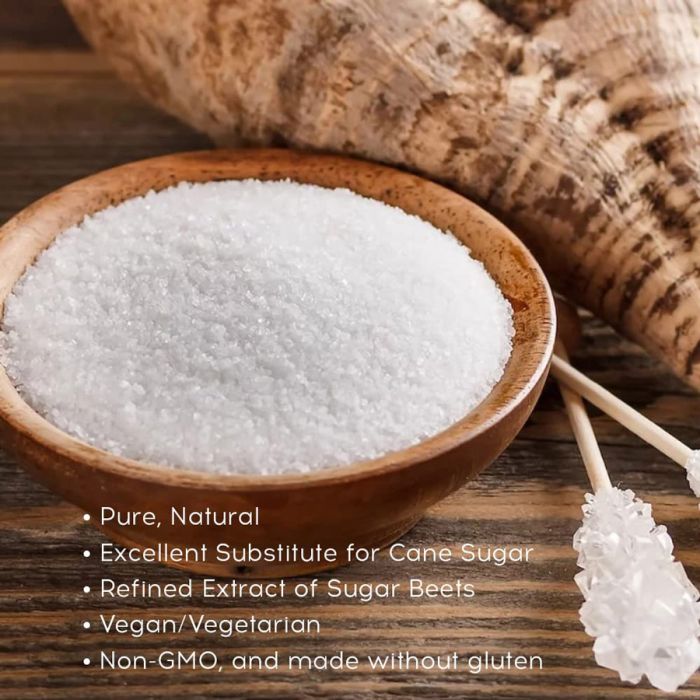Many individuals wonder if beet sugar vs cane sugar makes a difference in overall health.
Discovering the Distinctions being used and Benefits In Between Beet Sugar Vs Cane Sugar
In the culinary world, the option between beet sugar and cane sugar is not just regarding sweetness but involves a nuanced consideration of flavor, application, and impact. While both sugars stem from different plants, each goes through special production processes that subtly affect their attributes and suitability for various dishes. As chefs and customers significantly focus on both the environmental and taste accounts of their components, comprehending these distinctions ends up being crucial. This exploration supplies insight into just how each sugar kind can best enhance culinary productions.
Beginnings and Production Processes of Beet and Cane Sugar

Cane sugar, on the other hand, comes from the sugarcane plant, a tropical lawn belonging to Southeast Asia and now cultivated in tropical zones worldwide. The production of cane sugar starts with the harvesting of cane stalks, which are crushed to release the juice. This juice is then boiled to concentrate it, after which it is rotated in centrifuges to produce raw sugar crystals. These crystals are further refined to produce the white sugar typically available in shops.

Nutritional Material and Wellness Considerations

When contrasting the nutritional material of beet sugar and cane sugar, it comes to be apparent that both kinds basically offer the very same calorie values, with about 16 calories per tsp and no significant nutrient diversity. Both sugars, when eaten in excess, can add to elevated blood glucose degrees, a threat element for diabetes mellitus and other metabolic conditions. From a wellness viewpoint, moderating intake of any type of kind of sugar, whether from beet or cane, is recommended to stay clear of these possible negative impacts on health.
Flavor Profiles and Culinary Applications
Regardless of their similar chemical structures, beet sugar and cane sugar differ subtly in taste, which can affect their usage in various culinary contexts. Walking cane sugar usually carries a hint of molasses, also in its polished kind, lending a warm, caramel-like touch that boosts baked goods, coffee, and chocolate-based recipes. This slight molasses flavor is especially valued in the click for more info baking industry for including deepness to desserts and breads. On the various other hand, beet sugar is characterized by its highly refined, neutral taste, making it a flexible sweetener that does not alter the flavor profiles of dishes. This neutrality is particularly valuable in fragile dishes, such as light pastries, creams, and some sauces, where the intrinsic tastes of various other components are meant to stand out. Cooks and food makers may choose one kind of sugar over the other based on the desired taste result of their cooking developments.
Environmental Influence and Sustainability
While both beet and cane sugars are obtained from plants, their ecological impacts differ substantially due to the unique techniques of growing and handling needed for each. Sugar beet growing commonly entails considerable automation, which can raise fossil gas intake and carbon exhausts.
In look at this site addition, the handling of sugarcane commonly creates a considerable amount of waste, including bagasse, which, although usable as biofuel, frequently adds to air contamination if shed inefficiently. Sugar beet processing utilizes even more of the raw products, leading to less waste. Both industries encounter obstacles in lowering their ecological footprints, but ongoing technologies in farming methods and waste administration are aiming to enhance sustainability.
Economic Elements Affecting the Sugar Market
The economic characteristics of the sugar market are considerably affected by worldwide market needs and profession policies. Variables such as tolls, subsidies, and global profession agreements play crucial functions in forming the competitive landscape. For go to this web-site instance, in regions where sugarcane or sugar beet production is subsidized, manufacturers may have an economic benefit that allows them to supply reduced prices on the global market. This can develop disparities in earnings and market accessibility for producers in countries without such subsidies.
In addition, variations in international need for sugar, affected by nutritional fads and commercial usage in food products, directly impact prices and production levels. beet sugar vs cane sugar. Weather also play a critical role, as they can substantially affect plant returns and, subsequently, the supply chain. This irregularity introduces a level of economic uncertainty that can lead to financial investment volatility in sugar manufacturing fields, affecting decisions from planting to market strategy
Conclusion
Finally, both beet and cane sugar have unique qualities that match various culinary needs. While cane sugar conveys a rich flavor ideal for enhancing baked items, beet sugar's nonpartisanship is best for lighter meals. Nutritional similarities regardless of, their distinct production procedures and environmental influences include complexity to the selection in between them. Thus, understanding these distinctions helps cooks and consumers make informed choices that straighten with their health and wellness, culinary, and honest preferences.